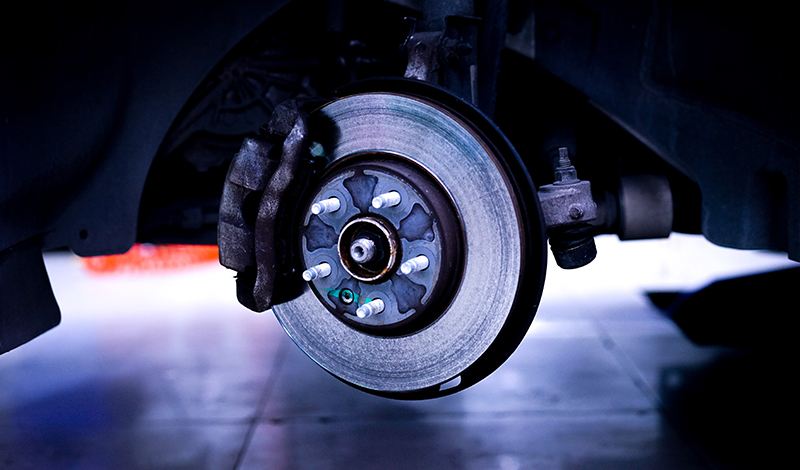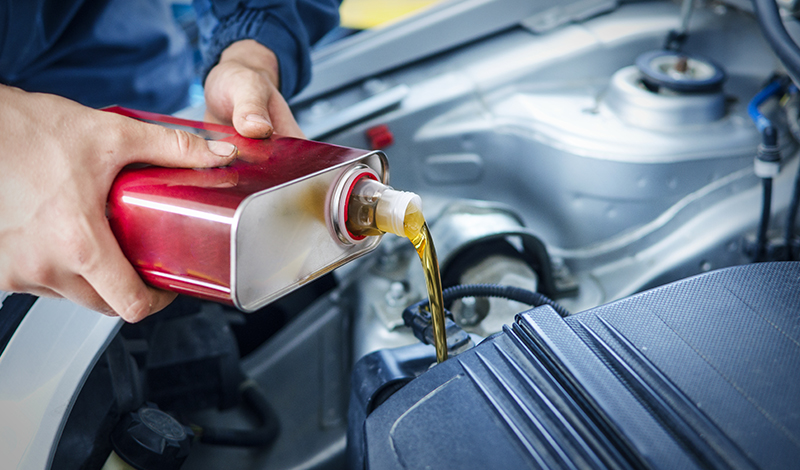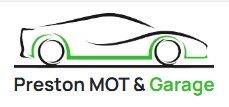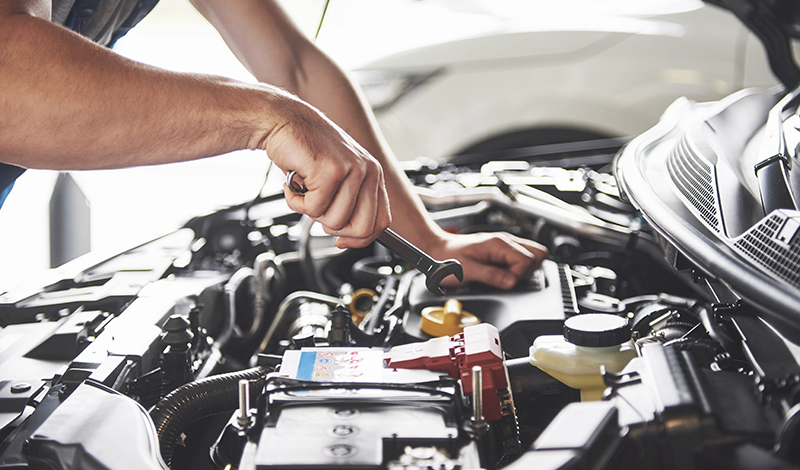Taking care of your car is much like taking care of one’s health. Routine check-ups and timely interventions can keep complications at bay. Just like your body needs regular health checks, your car needs periodic maintenance. This guide will equip you with everything you need to know about monthly car maintenance. From maintenance checks to professional inspections, understanding these elements will keep your vehicle running smoothly and safely. Here’s our comprehensive maintenance checklist for all car enthusiasts.
Checking Fluid Levels
Understanding the importance of fluid levels for vehicle performance is crucial. These liquids act as the lifeblood of your car, ensuring everything runs smoothly. There are several fluids to check, including engine oil, coolant, brake fluid, power steering fluid, and transmission fluid.
- Importance of Fluid Levels for Vehicle Performance: Fluids play a pivotal role in keeping the engine cool, ensuring brakes function correctly and providing lubrication to moving parts. A car with the right fluid levels can significantly reduce the risk of engine damage and costly repairs.
- Types of Fluids to Check: Begin with the engine oil – the most vital fluid. Use the dipstick to gauge the oil level. While you’re at it, examine the transmission fluid. Check your coolant level to prevent the engine from overheating. Don’t forget the brake fluid, vital for stopping your car. Lastly, ensure your power steering fluid is at the correct level, making your car’s steering smooth.
- Methodology for Checking Fluid Levels: To check your vehicle’s fluid level, always refer to the owner’s manual. Typically, you’ll use the dipstick for oil and transmission fluid. For coolant, ensure the level is between the minimum and maximum mark in the reservoir. Brake and power steering fluids have similar reservoirs. Always ensure the engine is cool before checking.
Inspecting Tyres

Tyres are where your car meets the road, so their maintenance is paramount for safety and efficiency.
- Significance of Tyre Maintenance: Ensuring your tyres are in good condition can prevent accidents. Correct pressure and tread depth optimise grip, especially in wet driving conditions.
- Checking Tyre Pressure: Using a tire pressure gauge, check your tyre pressure monthly. Match it with the manufacturer recommendations in your vehicle handbook. Maintaining the correct pressure ensures even wear and better fuel efficiency.
- Inspecting Tread for Wear: Tread depth is a measure of safety. Use a tread depth gauge and if it’s nearing the minimum legal requirement, consider replacement. Also, be on the lookout for uneven wear patterns.
- Tyre Rotation: To ensure even wear, rotate your tyres as per your car maintenance schedule. This extends their life and ensures consistent performance.
Checking Brakes

Your car’s brakes are its primary safety feature. Regular checks help prevent accidents.
- Significance of Brake Maintenance: Functioning brakes are non-negotiable. They reduce stopping distances and can make a difference in emergency situations.
- Inspecting Brake Components: Inspect brake pads for wear. If they’re thinning, it’s time to replace them. Check rotors for any warping or damage. Callipers, too, need attention – ensure they aren’t sticking or leaking.
- Identifying Signs of Wear or Damage: Noise when braking, vibration in the pedal, or pulling to one side can indicate brake issues. If you notice these, consult a mechanic.
Inspecting Belts and Hoses
Under the hood of your car, belts and hoses play a pivotal role in the smooth running of various components.
- Role of Belts and Hoses: They drive the alternator, water pump, and power steering, among other parts. A snapped belt can lead to engine damage.
- Inspecting for Wear or Damage: Regularly check belts for fraying or cracks. Hoses shouldn’t be soft, brittle, or swollen. If they show these signs, they need replacing.
- Identifying When Replacement is Necessary: A squealing noise when you’re driving or visible wear on belts indicates a need for replacement. For hoses, leaks or brittleness are clear signs.
Battery Maintenance
A car battery ensures your car starts and electrical components function.
- Importance of a Well-Charged Battery: Without a charged car battery, your vehicle simply won’t start. It powers the ignition and all electronic components.
- Weekly Engine Run: To prevent battery drain, especially if you don’t use your car regularly, run the engine weekly.
- Identifying Signs of a Weak Battery: Dimming headlights, slow engine start, or a flickering battery light on the dashboard are warning signs.
Cleaning and Detailing
Keeping your car clean isn’t just about aesthetics. It’s about longevity and ensuring components don’t degrade prematurely due to dirt or rust.
- Significance of Cleanliness: Clean cars resist rust and paint damage. Dirt and grime can also hide more severe issues, so regular cleaning lets you spot problems.
- Exterior Cleaning: Wash your car regularly to remove dirt. Waxing provides a protective layer against environmental contaminants.
- Interior Cleaning: Vacuuming the inside of the car and dusting surfaces prevent wear and tear and maintain a pleasant driving environment.
Oil Change

Engine oil lubricates the engine’s moving parts and prevents them from wearing out too quickly.
- Importance of Clean Engine Oil: Old or dirty oil can cause engine damage. Changing your oil as per manufacturer recommendations is essential.
- Modern Vehicle Oil Change Intervals: With advancements in oil quality, many modern cars can go longer between changes. Always follow your vehicle’s maintenance schedule.
- Checking Oil Levels and Quality: Using the dipstick, check your oil level and its colour. Darker oil may indicate it’s time for a change.
Professional Inspections
Complex vehicle systems occasionally require expert eyes.
- Importance of Professional Inspections: To prevent expensive repairs, professional checks help identify issues before they worsen.
- When to Seek Professional Help: If you notice unusual noises, warning lights, or any other anomalies, take your car to a mechanic.
- Benefits of Regular Professional Inspections: Routine inspections ensure your car is safe, and efficient, and can highlight potential issues.
General Checks
Regular inspections of various parts of your vehicle can save you from potential issues down the line.
- Conducting a General Vehicle Check: It’s a good idea to walk around the car and look for any visible damages or issues. Also, pop the hood and inspect under the bonnet.
- Areas to Inspect: Check wiper blades for wear, headlights and fog lights for clarity, and ensure all moving parts are well-lubricated.
- Benefits of a Routine General Check: Spotting problems early can save on maintenance costs and keep your car running efficiently.
Conclusion – Essential Car Maintenance
Maintaining a vehicle goes beyond just aesthetics or avoiding a breakdown; it’s about ensuring longevity and optimal performance. Regularly checking components, from the air filter to the brake system, can significantly enhance your car’s lifespan. Moreover, by adhering to the suggested maintenance schedule, you’ll witness improved mileage, ensuring your vehicle remains fuel-efficient. In essence, routine car maintenance is an invaluable investment, not just for your vehicle’s health but also for your safety and peace of mind on the road. Remember, a well-maintained car translates to a smoother, safer drive every time.

